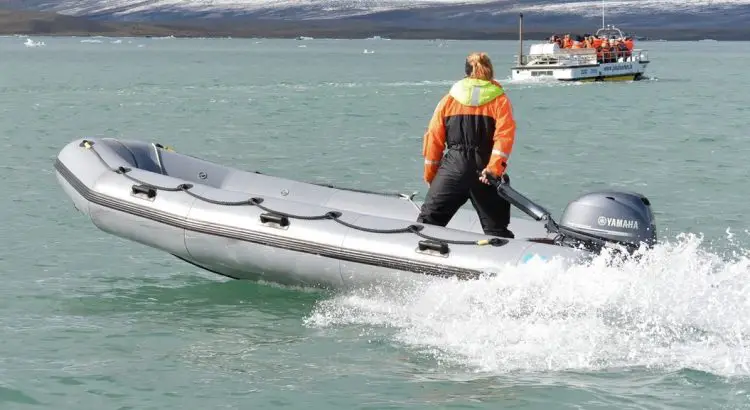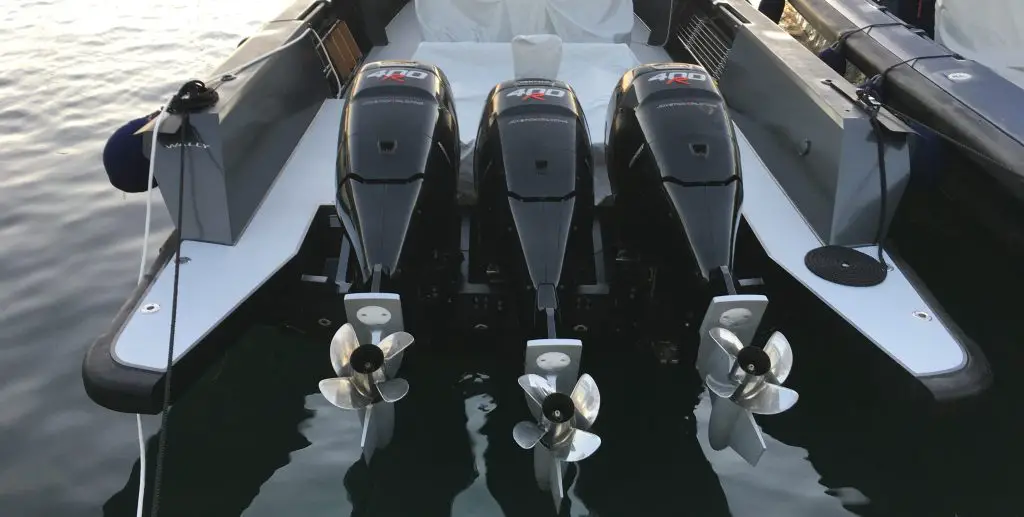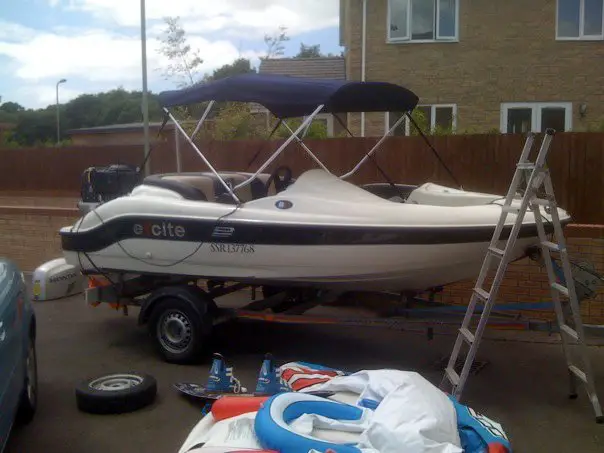This page contains affiliate links. This means that we may get a small commission for recommending products, if you choose to click on something and buy it. This does not cost you anything, but we wanted to be honest and let you know!
When deciding which boat you want to own, you will find that the motors are different and include an inboard or outboard motor.
There is, in fact, the third type of boat motor, which is formally known as an inboard/outboard (I/O).
Regardless of the motor that you choose, they all require regular maintenance to ensure that they are fully functioning and will not leave you stranded.
Below are brief descriptions of each type of motor that are used for boating.
Inboard Motor
An inboard motor of a boat requires a large box in the middle of the boat (where the motor is placed) and is featured on most medium to large vessels.
As they are molded after car engines, they have better performance in terms of fuel efficiency, horsepower, and torque.
Other benefits of using an inboard over an outboard motor include:
- Far quieter
- Better performance
- More fuel-efficient
- More engine choices i.e. turbocharged
- Better center of gravity and buoyancy
- Prop located under the boat and stays in the water
As you can see, there are many benefits that favor the inboard boat motor but they do come with drawbacks, which include:
- Expensive
- Harder to load onto trailers
- Transmission inside vessels means space is lost
- Potential fire risk without correct bilge blower
- Harder to remove engine compared with outboard
- Holes in hull mean there is potential for water leaks
On The Marine Lab, we post more regarding the outboard motor compared with the inboard motor.
This is primarily because there are far more accessories available for an outboard motor.
Outboard Motor
Using a small outboard motor to ride the waves is the most popular type of motor for most people who use a boat for fishing, recreation or light commercial use.
They simply attach to the transom of your boat and are relatively cheap to purchase depending on the engine size you decide to use.
Below are some of the advantages of using an outboard motor:
- Ability to lift the engine out of the water
- Easily remove the engine when not in use
- Can upgrade far easily
- Better second-hand market
- Easier to load onto a trailer
- Can mount multiple to the transom
- Require no holes in the hull
- Less complex
- … and much more
The advantages of the outboard motor make it one of the most popular choices for powering up your boat but there are some drawbacks that include:
- Lack of performance
- Noisier
- Tough to start when not used regularly
- Weight is at the rear of the boat
As the outboard motor is exposed to the marine environments, if you do not intend on taking it off the boat, we recommend using an outboard motor cover.
These will ensure that they are kept protected in all weather.
Inboard/Outboard (I/O)
Consider the I/O motor a hybrid between the two different main types of boat motors.
This is a specific type of motor that is located in a similar area to the outboard (under the swim platform in most cases).
The propeller shaft is located through the bottom of the hull and drives the power.
Maintaining The Motors
The motor of your boat requires similar servicing to that on an automotive vehicle on the road.
From oils to spark plugs for boats, they will require specific products to ensure reliable running.
Due to emissions, the majority of modern motors are 4 stroke and thus require 4 stroke oil.
Older two-stroke motors are becoming fairly collectible with many finding the responsiveness of the motor very desirable.
Many also consider the 2 stroke motor easier to work on with fewer sensors that are required for emissions.
When it comes to the outboard oil, be sure to use the correct 2 stroke oil when performing a service.
Fuel
Unless you are using an electric trolling motor, you will require fuel for the motor. This is pretty standard stuff but when a boat is not in use for many months, the fuel will evaporate and oxidize.
To avoid any issues, we highly recommend using a marine fuel stabilizer for your boat, which will protect the engine, restore lost power and improve the fuel economy.
For those that use a boat gas tank, you can do the same thing but we always advise that you empty old fuel that is left in the gas tank before being used in your motor.
Trolling Motors
Not all boats are powered by internal combustion and there is an environmentally friendly alternative that runs from electric power from the marine battery.
With the use of the best trolling motor, you are able to keep up with most small outboards without using any gas or diesel.
The advancement of marine electronics will see the popularity of trolling motors to increase each year.
They are also becoming far more robust against the rough marine environment and can be much cheaper than a complete outboard setup.
Conclusion
Regardless of the motor you use for your boat, they will all require some degree of maintenance over the years.
View all our boat motor articles to gain additional knowledge in the world of motors and servicing.




